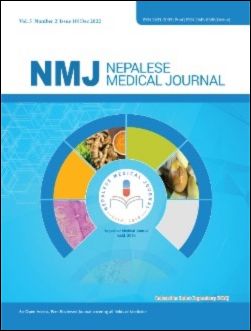Effect of Application, Duration and Dosing Frequency on the Efficacy and Adverse Effect of Adapalene in Acne Vulgaris: an Open-Label Randomized Controlled Study
DOI:
https://doi.org/10.3126/nmj.v5i2.47237Keywords:
Acne vulgaris; Adapalene; Short contact therapyAbstract
Introduction: Topical retinoids are the mainstay of treatment for mild and moderate acne but longer duration of application causes adverse effects. The study aimed to evaluate the effect of application, duration, and dosing frequency on the efficacy and adverse effect of Adapalene in Acne Vulgaris.
Materials and Methods: The study design was an open-label randomized controlled split-face trial. Patients with acne grades 1 and 2 were randomized into three groups using the split-face technique on the right and left sides. On the right side, patients applied adapalene daily in all the groups and alternately on the left face. The three groups of the study were overnight, 1 hour, and ½ hour application of adapalene. Follow up period was 4,8 and 12 weeks. Lesion count and side effects were evaluated at each follow-up.
Results: Out of 292 who completed the study, the decrease in total lesion count was highest in the overnight group. Regarding specific lesion count, the decrease in non-inflammatory lesions was highest in the overnight group. However, short contact therapy with 1-hour application showed comparable efficacy with the overnight group in regards to inflammatory lesion count. There was a significant reduction of lesions in all groups from baseline to 12 weeks, with ½ hour group having minimal side effects followed by 1 hour and overnight.
Conclusion: Short contact therapy for acne shows promising results in regard to efficacy and better tolerance.
Downloads
Downloads
Published
How to Cite
Issue
Section
License
Copyright (c) 2022 Prasanna Kumar Jha, Satyendra Kumar Singh, Tulika Rai

This work is licensed under a Creative Commons Attribution 4.0 International License.
This license enables reusers to distribute, remix, adapt, and build upon the material in any medium or format, so long as attribution is given to the creator. The license allows for commercial use.
Copyright on any article published by Nepalese Medical Journal is retained by the author(s).
Authors grant Nepalese Medical Journal a license to publish the article and identify itself as the original publisher.
Authors also grant any third party the right to use the article freely as long as its integrity is maintained and its original authors, citation details and publisher are identified.




